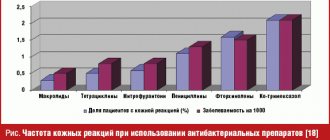Fentanyl
Patients experiencing severe side effects should be closely monitored for at least 24 hours (depending on symptoms) after removal of Fentanyl TTC, as fentanyl plasma concentrations decrease gradually and a 50% reduction is achieved within approximately 17 (13- 22) hours.
Fentanyl TTC should be kept out of the reach of children both before and after use.
Fentanyl TTC cannot be cut.
Use in patients who have not previously taken opioids or are not tolerant to opioids
When using Fentanyl TTC in opioid-naïve patients, significant respiratory depression and/or death have been reported very rarely when used as initial opioid therapy. The potential for severe or life-threatening hypoventilation exists even when a minimal dose of Fentanyl TTC is used as initial opioid therapy in opioid-naïve patients. It is recommended to prescribe Fentanyl TTC to patients demonstrating opioid tolerance.
Respiratory depression
As with other narcotic analgesics, significant respiratory depression may occur in some patients when using Fentanyl TTC. Patients should be carefully monitored for such effects. Respiratory depression may continue after removal of the TTS. The degree of respiratory depression increases with increasing dose of Fentanyl TTC. Medicines that affect the central nervous system may increase respiratory depression.
Chronic lung diseases
Fentanyl can cause a number of severe side effects in patients with chronic obstructive pulmonary disease and other pulmonary diseases. In these patients, opioids may decrease respiratory excitability and increase respiratory resistance.
Increased intracranial pressure
Fentanyl TTC should be used with caution in patients who may be particularly sensitive to elevated CO2 levels. Such patients are those who have experienced increased intracranial pressure, impaired consciousness, or coma. Fentanyl TTC should be used with caution in patients with brain tumors.
Diseases of the cardiovascular system
Fentanyl may cause bradycardia and should therefore be used with caution in patients with bradyarrhythmias. Fentanyl TTS should be used with caution in patients with arterial hypotension.
Liver failure
Because fentanyl is metabolized to inactive metabolites in the liver, impaired liver function may result in delayed elimination of the drug. Patients with hepatic impairment taking Fentanyl TTC should be closely monitored for symptoms of possible fentanyl toxicity, and the dose of Fentanyl TTC should be reduced if necessary. Opioid analgesics can increase the tone of the smooth muscles of the gastrointestinal tract and biliary tract.
Fentanyl TTC should be used with caution in patients with a history of hepatic colic.
Kidney failure
Less than 10% of fentanyl is excreted unchanged by the kidneys, and fentanyl has no known active metabolites that are excreted by the kidneys. Patients with renal impairment taking Fentanyl TTC should be closely monitored for symptoms of possible fentanyl toxicity and the dose of Fentanyl TTC should be reduced if necessary.
Serotonin syndrome
Caution should be exercised when co-administering Fentanyl TTC with drugs that affect the serotonergic neurotransmitter system. Concomitant use with serotonergic drugs such as selective serotonin reuptake inhibitors (SSRIs) and serotonin norepinephrine reuptake inhibitors (SNRIs), as well as drugs that reduce serotonin metabolism (including MAO inhibitors), may lead to the development of potentially life-threatening serotonin syndrome. This syndrome may occur when taking recommended doses.
Serotonin syndrome may include psychiatric disorders (agitation, hallucinations, coma), autonomic disorders (tachycardia, blood pressure fluctuations, hyperthermia), neuromuscular disorders (hyperreflexia, incoordination, rigidity) and/or gastrointestinal disorders (nausea, vomiting, diarrhea) .
If the development of serotonin syndrome is suspected, therapy with Fentanyl TTC should be discontinued.
Interaction with inhibitors of cytochrome CYP3A4
When combined with inhibitors of cytochrome CYP3A4 (for example, ritonavir, ketoconazole, itraconazole, troleandomycin, clarithromycin, nelfinavir, nefadozone, verapamil, diltiazem and amiodarone), an increase in fentanyl plasma concentrations is possible. The consequence of this is an increase or prolongation of both the therapeutic effect and possible side effects (respiratory depression). In these cases, the patient should be under constant medical supervision.
Therefore, the concomitant use of transdermal forms of fentanyl with inhibitors of cytochrome CYP3A4 is not recommended, unless patients are under medical supervision. If symptoms of depressed breathing occur, the dose of the drug should be reduced.
Accidental exposure to TTC
Accidental skin exposure (especially in children) to Fentanyl TTC through close physical contact with a patient using TTC may result in opioid overdose. Patients should be warned that in case of accidental exposure to the skin of a person not taking the drug, TTS should be removed immediately. For symptoms of overdose, see section "Overdose".
Use in elderly patients
Data from studies of intravenous fentanyl suggest that elderly patients will have decreased clearance and prolonged half-life and may be more sensitive to fentanyl than younger patients. Elderly patients taking Fentanyl TTC should be closely monitored for symptoms of possible fentanyl overdose and, if necessary, the dose of Fentanyl TTC should be reduced.
Effect on the gastrointestinal tract
Opioids increase the tone and reduce propulsive contractions of the smooth muscles of the gastrointestinal tract. As a result, gastrointestinal transit time increases, which can cause constipation. Patients should be informed about measures to prevent constipation and the prophylactic use of laxatives. Additional precautions should be taken in patients suffering from chronic constipation. If paralytic ileus is present or suspected, treatment with Fentanyl TTC should be discontinued.
Use in debilitated and weakened patients
Since clearance may be reduced and the half-life of the drug may be reduced in debilitated and debilitated patients, depleted and debilitated patients should be under constant medical supervision to identify symptoms of possible overdose, in which case the dose of Fentanyl TTC should be reduced.
Drug dependence and potential for abuse
With repeated administration of opioids, tolerance and physical and psychological dependence can develop. Iatrogenic dependence with opioid use is rare.
As with other opioid agonists, there is a potential for abuse of fentanyl. Abuse or intentional misuse of Fentanyl TTC can lead to overdose and/or death. Patients at increased risk for opioid abuse may still receive adequate treatment with modified-release narcotic analgesics but should be closely monitored for possible signs of off-label use, abuse, or dependence.
Fever/external heat sources
A pharmacokinetic model suggests that serum fentanyl concentrations may increase by approximately one-third if body temperature rises to 40°C. Therefore, patients with fever should be closely monitored for opioid-specific side effects and subsequent dose adjustments if necessary. There has been an increase in the release of fentanyl from TTS with increasing temperature, which can result in overdose and death of the patient. A study on healthy volunteers showed that when heated with fentanyl TTC, there was an increase in mean AUC values by 120% and Cmax by 61%. All patients should avoid direct exposure of the Fentanyl TTC application site to external heat sources, such as heat lamps, tanning lamps, intense sunbathing, heating pads, saunas, solariums, hot water baths, etc.
Discontinuation of the drug
If it is necessary to discontinue the use of Fentanyl TTC, replacing this drug with other opioids should be done gradually, starting with low doses. This drug change regimen is necessary because fentanyl concentrations gradually decrease after TTC removal, with a 50% reduction in serum fentanyl concentrations taking 17 hours. Withdrawal of opioid analgesia should always be gradual to prevent the development of a withdrawal syndrome.
Instructions for disposal of Fentanyl TTS
Unused TTS must be returned to the attending physician for disposal. Used TTS should be folded in half with the sticky side inward and disposed of independently.
The oncologist answered important questions about pain relief for cancer - from the effect of the patch to prayer
The topic of the next episode of the “Tell me, Doctor” program was pain management in oncology.
, Irina Andreeva, answered important questions .
The topic is really relevant for many people, because pain bothers about a third of patients in the first stages of the disease and almost everyone in advanced stages. It is also important for relatives of seriously ill people.
a three-stage system of pain relief in oncology throughout the world .
At the first stage, for mild pain, non-steroidal anti-inflammatory drugs are used.
At the second stage, for moderate pain, weak opioid analgesics and non-steroidal drugs are used.
At the third stage, when the pain becomes unbearable, they move on to narcotic analgesics.
Who determines the intensity of pain to select medications?
The intensity of pain is determined by the patient himself, his family or a doctor.
There are special scales by which the severity of pain is determined. For example, a visual analogue scale (VAS). This is a segment from zero to 10 cm, where 0 means no pain, and 10 means unbearable pain. The patient selects a number to rate the pain:
0-3 weak. 4-7 - moderate. 8-10 indomitable, unbearable.
If a person cannot speak due to the severity of his condition, the intensity of pain is determined by facial expressions, the way the person lies, how active he is... Relatives can understand how a person reacts to painkillers.
How to protect the stomach from the side effects of painkillers, since even the weakest drugs are harmful to it?
First-stage drugs have side effects - they irritate the gastrointestinal mucosa. To protect the gastrointestinal tract, you need to follow the rules - take medications after meals; take the minimum dose that produces an effect; You can also use gastroprotectors (substances that protect the stomach).
“You need to report all sensations to your doctor – pain syndromes, side effects,” the oncologist emphasized.
So, for example, if side effects begin from taking opioid analgesics for moderate pain (nausea, vomiting, etc.), then you need to tell your doctor about this in order to reduce the dose or switch to other drugs. Moreover, if the medicine causes vomiting, then it is of no use, it does not enter the body. Therefore, other forms are needed - injections, pain-relieving patches.
Is the pain relief patch effective?
It gives a good analgesic effect, sometimes completely anesthetizes. But everything is individual, it can cause side effects.
Its big advantage is its convenience for the patient and his relatives - there is no need to give injections, the patch is valid for several days. But remember that on the first day you need to additionally take a drug from the first or second group.
Do I need to donate empty narcotic painkiller ampoules?
No, empty ampoules, blisters, and boxes do not need to be returned. But you need to donate unused drugs.
Who will write a prescription for painkillers during the long New Year holidays?
Now such a prescription can be issued by a medical professional of any medical organization individually. On New Year's Day and any other weekend, a prescription can be issued by the outpatient service worker on duty.
When to give painkillers - until pain or when pain is unbearable? Should a person endure?
Pain must be prevented! You can’t think like this: if it hurts, I’ll accept it, if it doesn’t hurt, I won’t accept it. Prescribed medications must be taken every day without skipping, strictly by the hour. A constant concentration of the substance is needed. If you interrupt, it will be more and more difficult to relieve the pain each time.
If you choose the right drug and do not interrupt your intake, you can live without pain at any stage.
Do non-drug methods work? Hypnosis, auto-training, prayer, etc.
Everything is individual. If the patient’s family is a believer and has good relationships, then all the methods together can have an effect - stroking the hand, prayer. Everything is for the benefit of the patient, everything helps him.
Let us note that the task of pain relief in oncology is not only to relieve a person from suffering, but also to prolong his life activity as much as possible and improve the quality of life.
More useful information is in the NT program “Tell me, Doctor,” hosted by Svetlana Sterligova .
← What do Novgorodskie Vedomosti write about on November 13?



